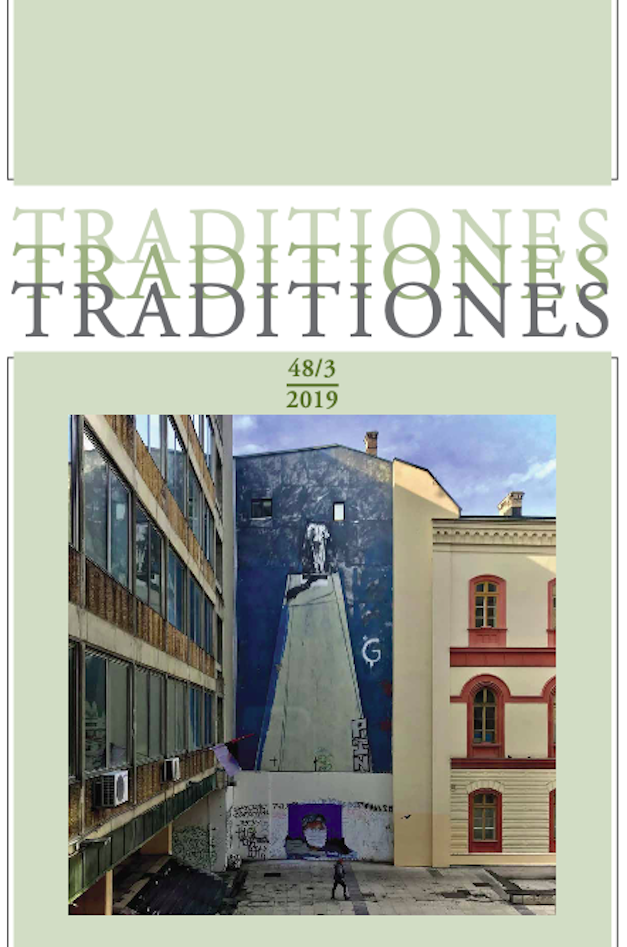Archives
-
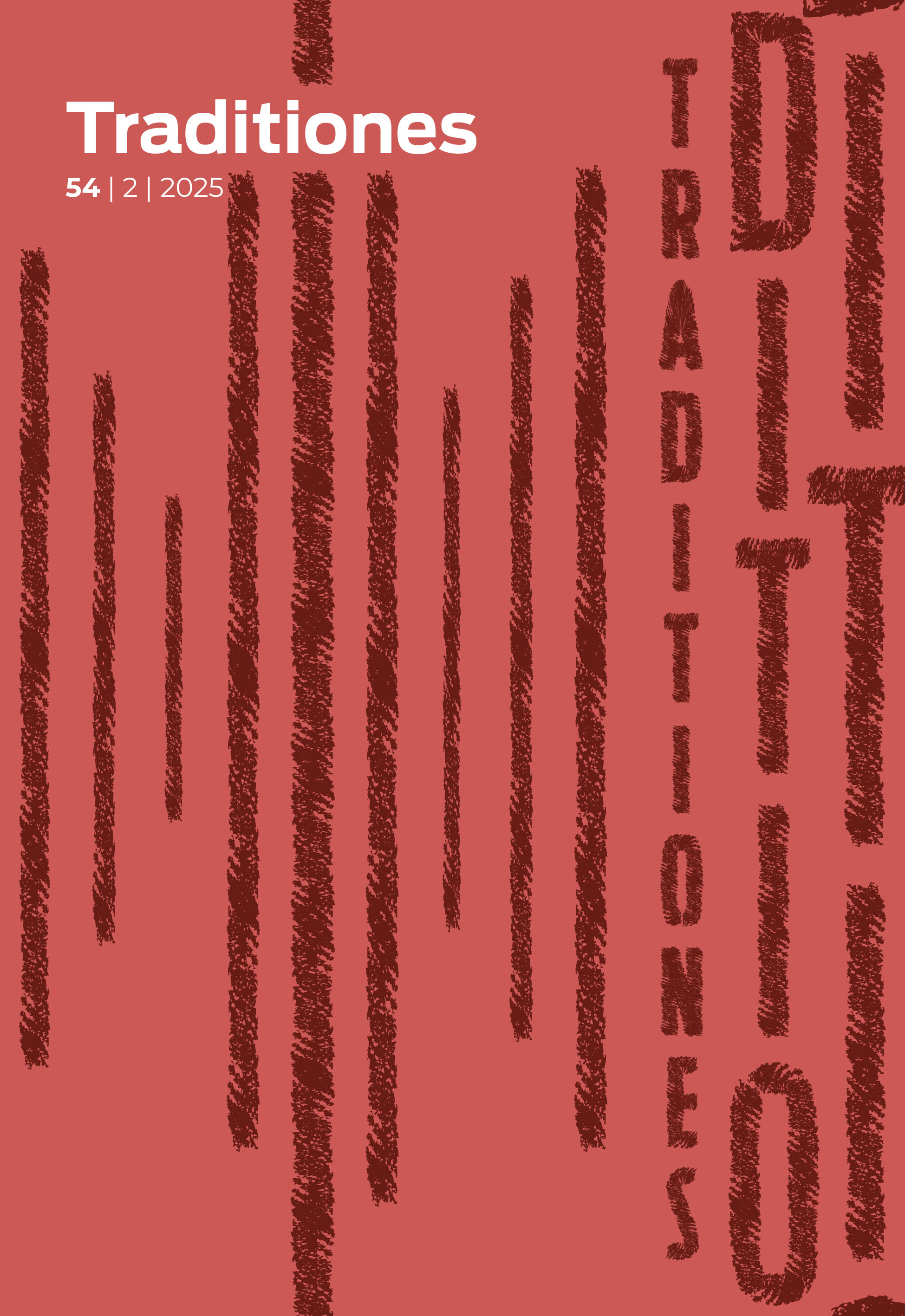
Razprave / Articles
Vol. 54 No. 2 (2025)Volume Editors: Tatiana Bajuk Senčar, Miha Kozorog, Rebeka Kunej
This issue presents a range of research articles in the fields of anthropology, ethnology, folklore studies, and ethnomusicology that feature analyses of ethnographic and archival materials conducted in various regions of Europe – from the Baltic region through Belarus and Hungary to Slovenia. Thematically speaking, authors explore a range of topics and methodological issues: research on Roma, ethnomusicological paradigms, children’s and digital folklore, and the interpretation of historical wedding customs.
-
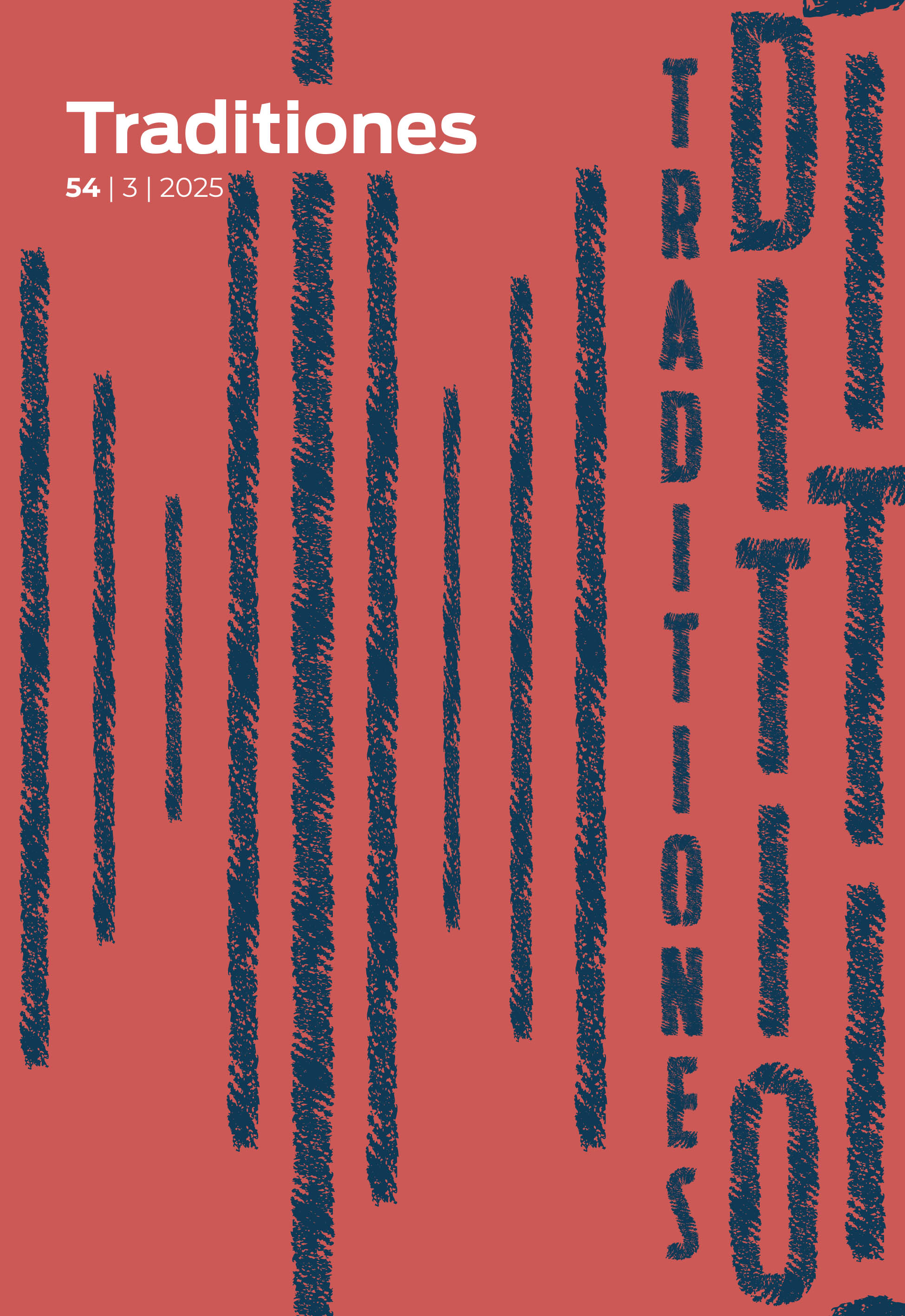
Dediščina večkulturnih območij / Heritage of Multicultural Areas
Vol. 54 No. 3 (2025)Volume Editors: Anja Moric and Marjeta Pisk
-
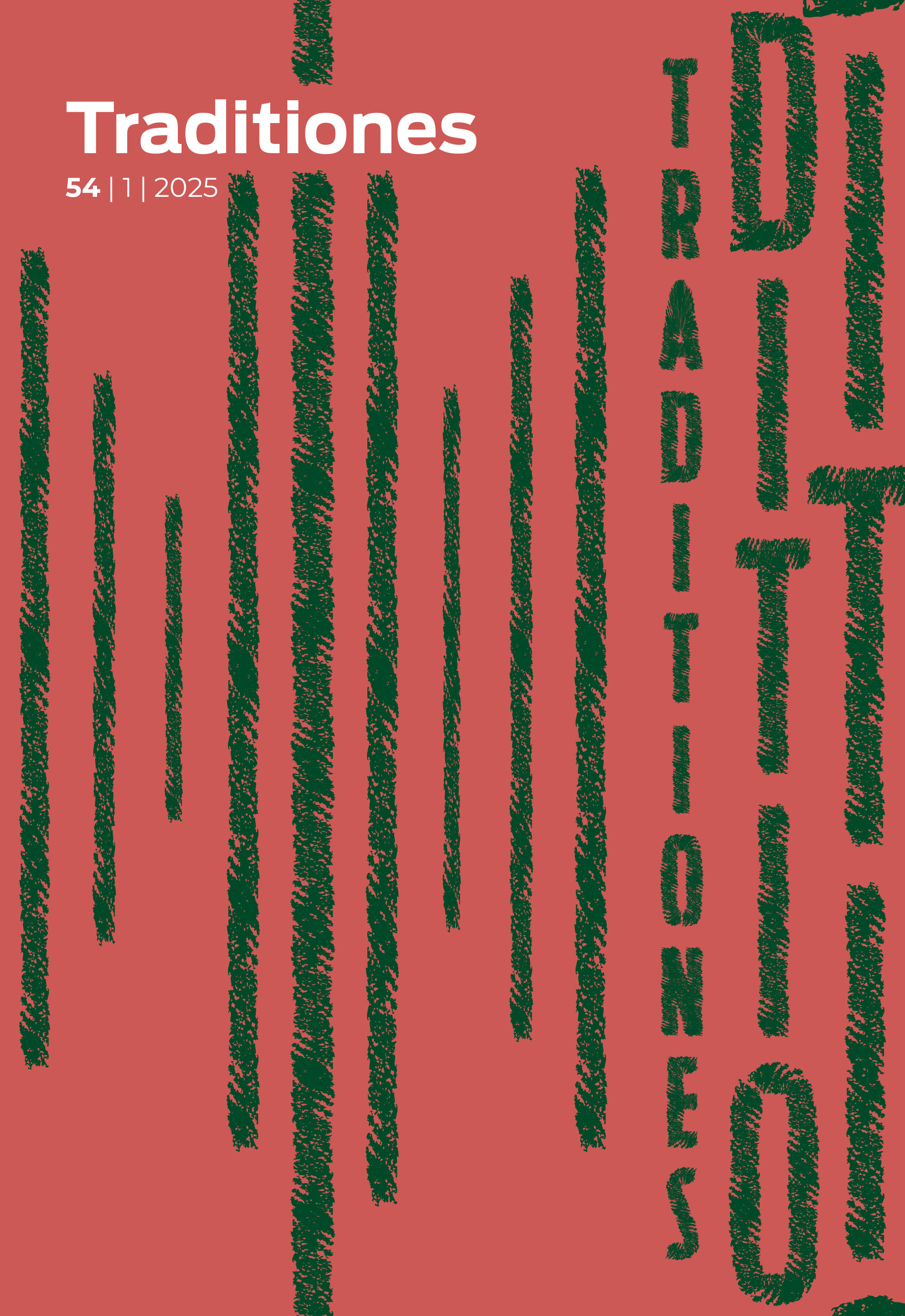
Dediščina na obrobjih? Srednje- in vzhodnoevropske perspektive / Heritage on the Margins? Central and Eastern European Perspectives
Vol. 54 No. 1 (2025)Volume Editors: Špela Ledinek Lozej and Nataša Rogelja Caf
The relations, flows, and shifts between margins and centres are at the core of this thematic issue. They have prompted us to reflect on the geographical, political, and academic margins and centres of Europe using the heritage angle to discuss multiple relational processes with, within, and beyond the so-called Central and Eastern Europe (CEE) that seems to be a promising laboratory for such discussion. Namely, an explicit or implicit distance from the core European narratives and symbols is a thread that runs through ethnographies and papers included in this thematic issue. How to think about marginality and centrality from within this part of the world? What can be gained by approaching European heritage and memory from CEE? What are the inner margins of CEE?
-

Etnografije »Land und Leute« v regiji Alpe-Jadran v 19. stoletju / Ethnographies of “Land und Leute” in the Alps-Adriatic Region in the 19th Century
Vol. 53 No. 3 (2024)Volume Editors: Jurij Fikfak and Klaus Schönberger
Ethnographic accounts from the 19th century, including “Land und Leute”, statistical reports and travelogues, provide insight into how ethnographers (broadly defined) presented and investigated the transformations occurring in the multicultural Alps-Adriatic region. An examination of these documents elucidates “in-between” practices among diverse languages and cultures, and facilitates an exploration of how individuals negotiated complex national and cultural identifications.
-
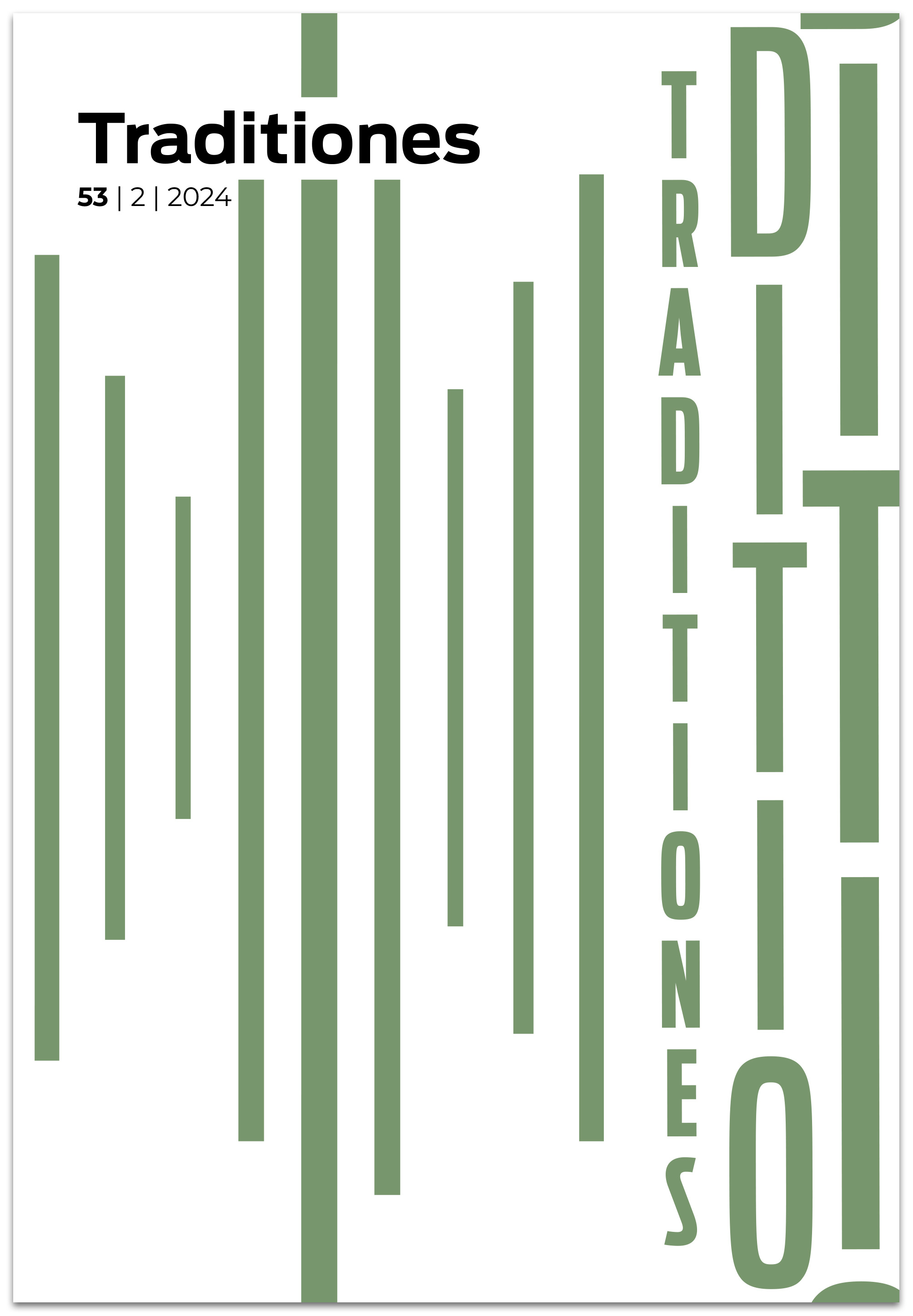
Obrazi izolacije / The Faces of Isolation
Vol. 53 No. 2 (2024)Volume Editors: Dan Podjed and Lana Peternel
The articles presented in this special issue investigate isolation as a complex phenomenon encompassing both physical and symbolic dimensions, exploring its impact on identities, social cohesion, and community life – particularly during periods of persistent and interconnected crises. The authors analyse the multifaceted nature of isolation, which shapes daily practices, emotional well-being, and community bonds, providing valuable insights into the challenges faced and the resilience exhibited by isolated communities.
-
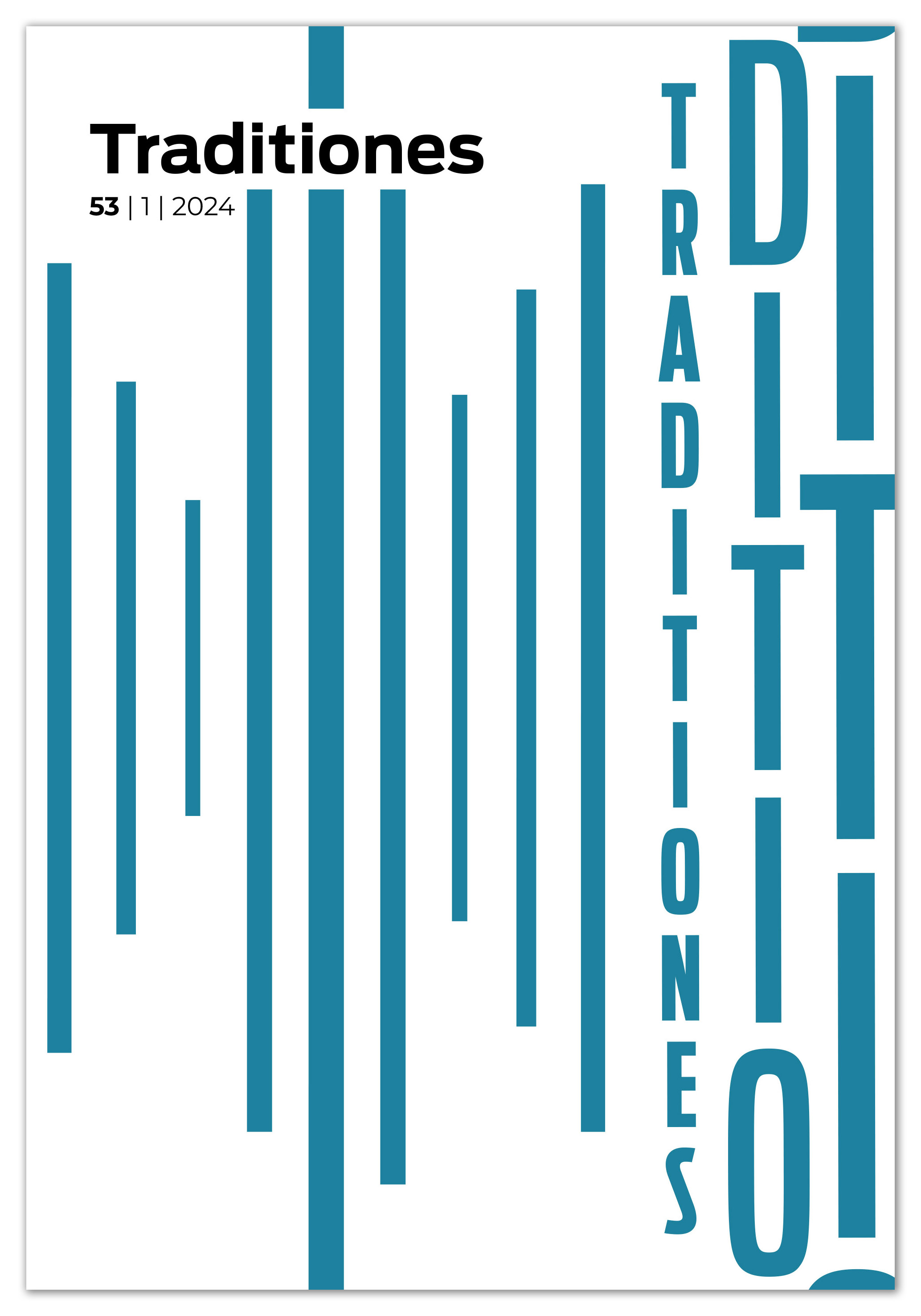
Živali v žarišču: novi koncepti raziskav živali v humanistiki / Animals in Focus: New Concepts for Animal Research in Humanities
Vol. 53 No. 1 (2024)Volume Editor: Marjetka Golež Kaučič
This issue of Traditiones places animals in focus, to contemplate its point of view, and replace the anthropocentric stance with the zoocentric one, and deconstructs the social position of animals today in imagination and reality. Authors are thinking about animal position in new ontological paradigms and present the relationship between human and animal through representations in folklore, literature, film, language, and photography. The block opens with a conceptual overview on complex multidisciplinary research of animals based on new insights and political practices by Marjetka Golež Kaučič. Zoltan Nagy and Lizanne Henderson examine the image of the Siberian and Polar bear in culture and society. Anthropocentrism in language is presented by Saša Babič through the stereotyping of animals in short folklore forms. Kalina Zahova examine the position of animals reflected through the exploration of negative and positive representations of animals in children’s textbooks, in the literature curriculum developed by the Bulgarian Ministry of Education and Sciences. The issue concludes with Branislava Vičar's s study of the animal bodies in the Anthropocene by analyses of five photographs from the genre of animal photojournalism that capture, contest, and reconfigure the relations between animal bodies and specific places of exposure.
-
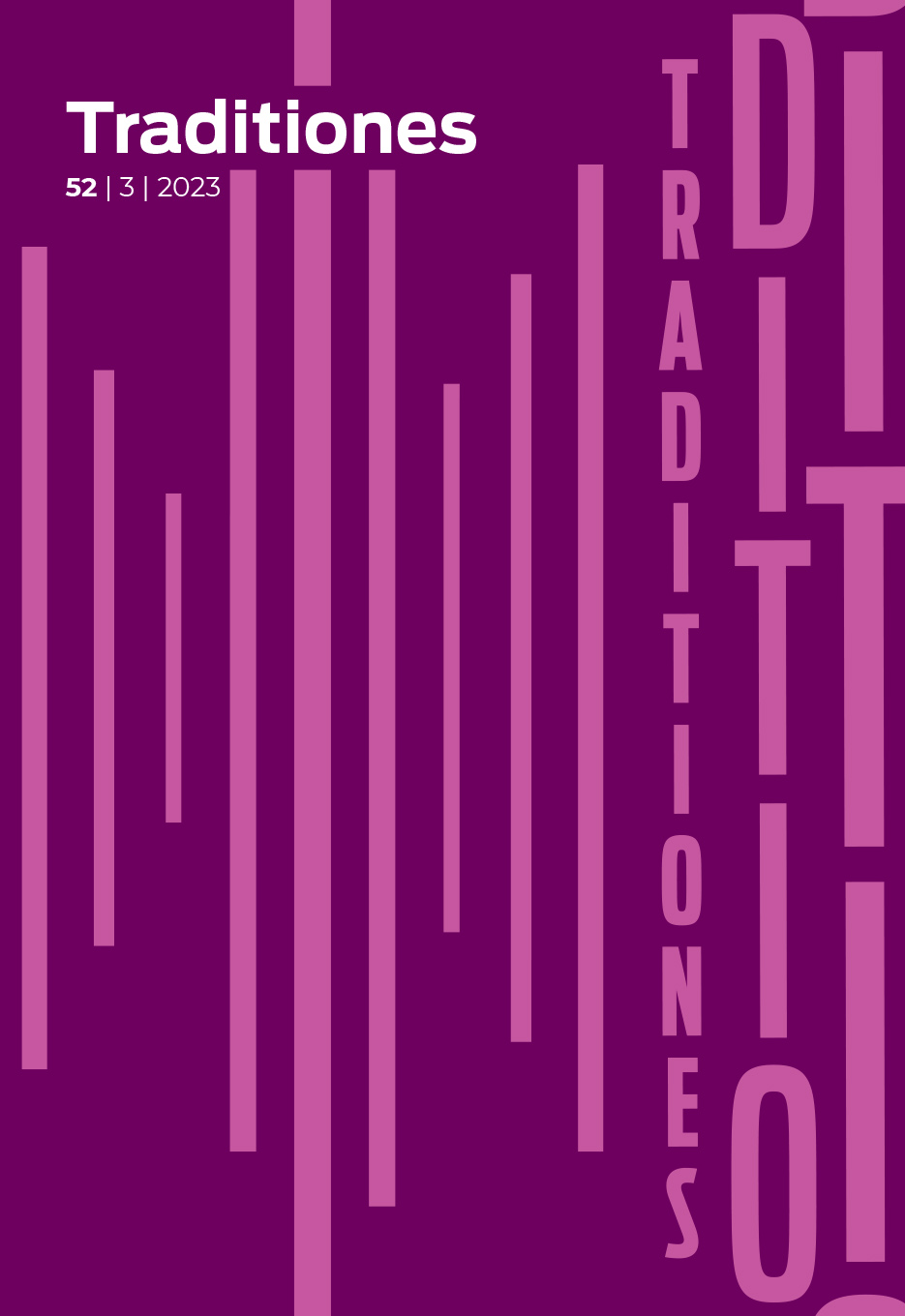
Multilokalnost v Evropi / Multi-local Living in Europe
Vol. 52 No. 3 (2023)Volume Editors: Tatiana Bajuk Senčar and Cédric Duchêne
This issue of Traditiones contains a thematic block dedicated to multi-local living in Europe, which explores a range of topics, social actors, approaches, and sites of research – reflecting in this manner the breadth of this growing, interdisciplinary field of study. The block opens with a conceptual overview and analysis of multi-local practices in Slovenia by Tatiana Bajuk Senčar, followed by two studies of multi-locality in Bulgaria. Tanya Matanova’s study is centered on multi-local residents of Sofia and their understandings of home. Yelis Ivanova and Vanya Ivanova examine the role of multi-local actors at two religious sites in northeast Bulgaria. Lena Greinke provides a quantitative study of student multi-locality in Hanover during the COVID-19 pandemic, and Barbara Jaczewska’s interdisciplinary analysis centers on multi-locality as a spatial practice in Poland’s Mazovia Province. The issue concludes with Riika Patrikainen’s study on the performance of Greek death laments in the context of ethnographic interviews.
-
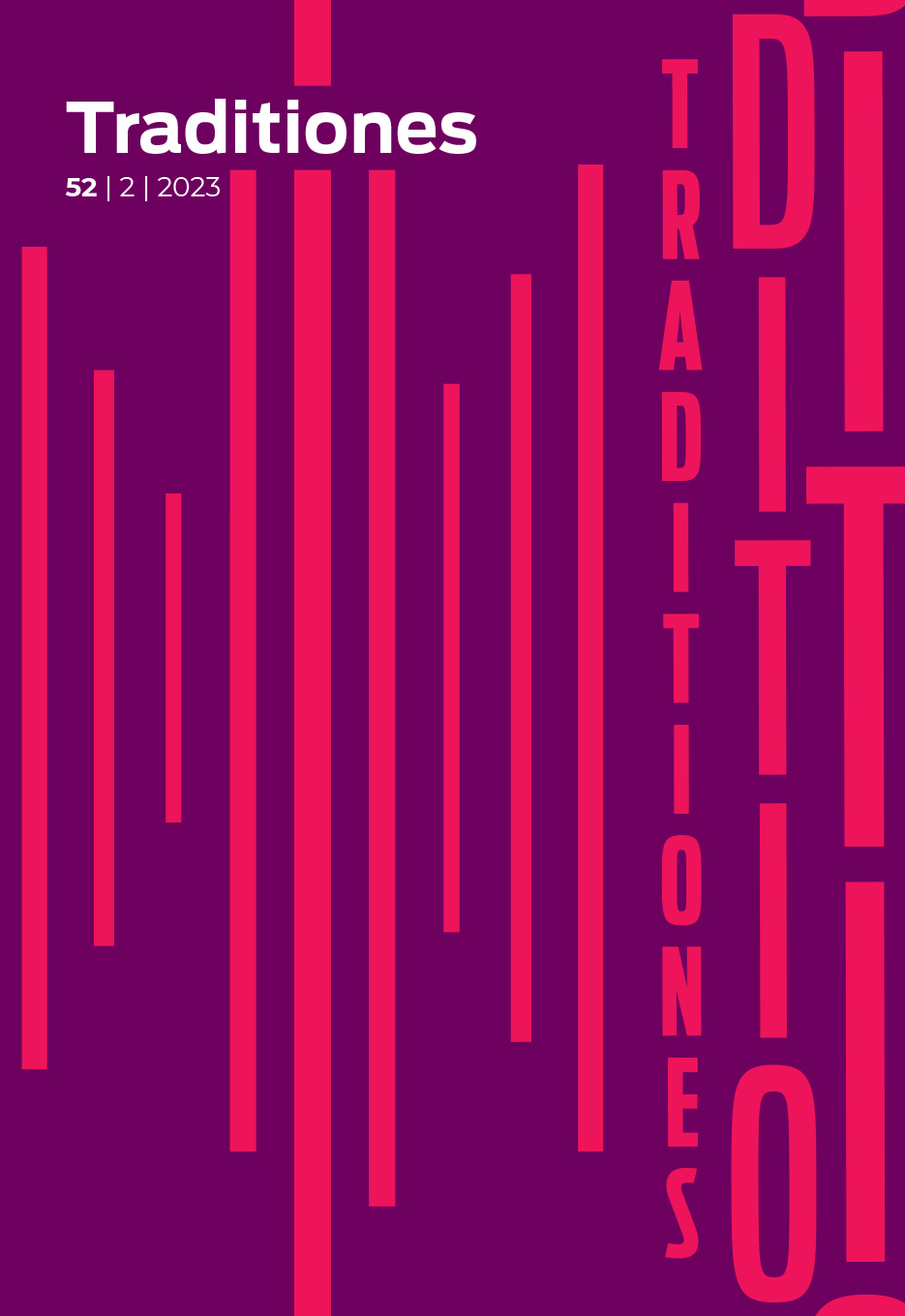
Folklora: spomini, politike, dediščinjenje / Folklore: Memories, Politics, Heritagisation
Vol. 52 No. 2 (2023)Volume Editors: Rebeka Kunej and Marjeta Pisk
The present discussions in this thematic issue of Traditiones (Vol. 52 No. 2) address folklore, especially folk music and dance, memories, politics and heritagisation in the post-socialist milieus of Bulgaria, the Czech Republic, Estonia, Latvia, and Slovenia. Fourteen authors in eight articles thus reveal the similarities arising from related cultural-political systems, while the individual studies at the same time point out the specifics which derive from the implementation in the local environment, time period, and the modality of the folklore activity.
Participatory singing, dancing, and musicking within and beyond folklore ensembles, organised festivals, singing and folklore competitions, and open-air dance events reflect the multifaceted nature of folklore activity, which concurrently combines the institutional organisation and reminiscence of the past representational role, and the abundantly present embodiment and emotions that make this activity so attractive to so many. Both in socialism and post-socialism, as well as in today’s moment.
-
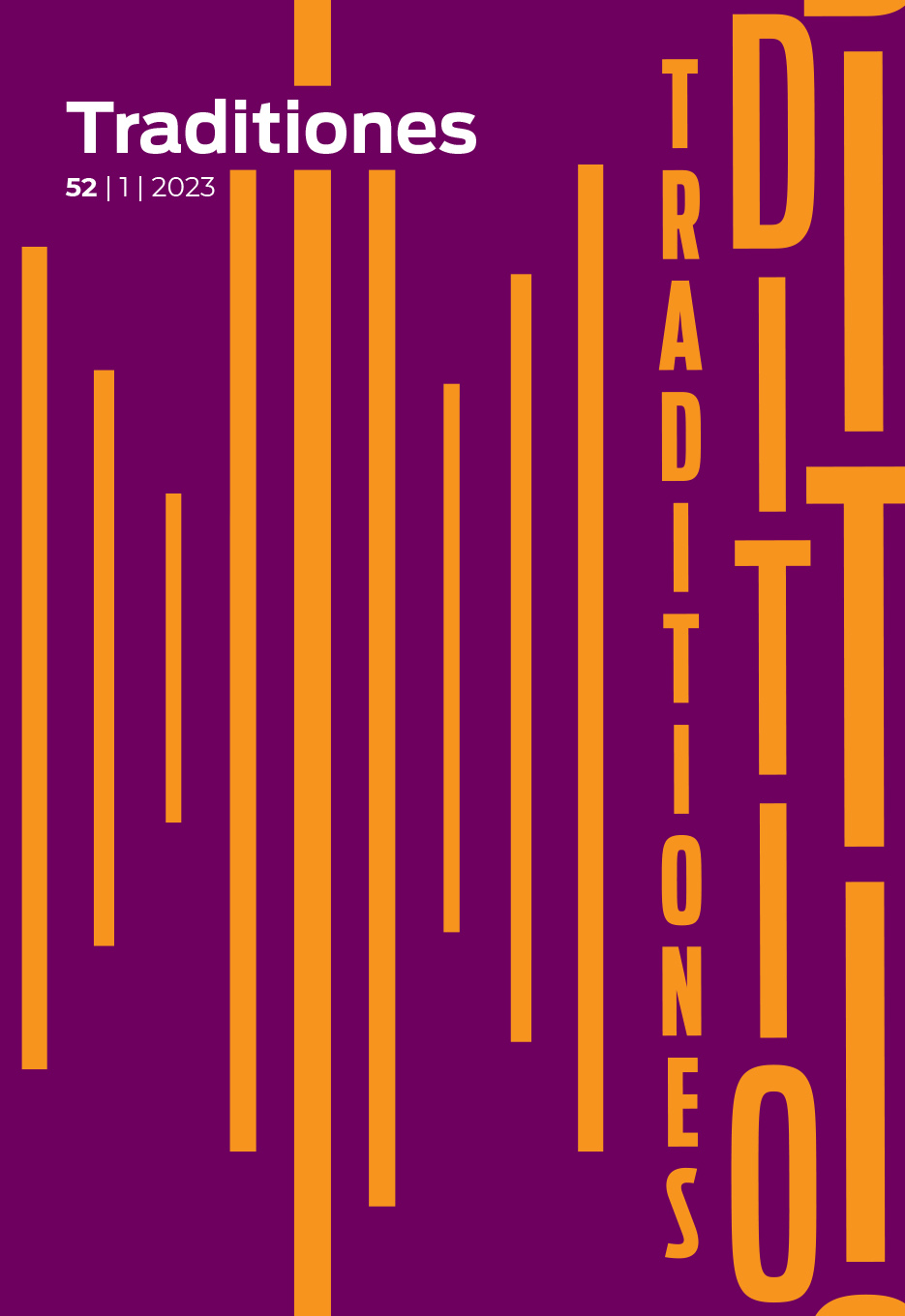
Skrb za krajine / Care for Landscapes
Vol. 52 No. 1 (2023)Volume Editor: Miha Kozorog
After 20 years, Traditiones has new editors. This is the first issue of the new editorial team and the first issue of a thoroughly redesigned journal. It is devoted to the care for landscapes, a topic that seems to resonate in contemporary Slovenian ethnology and socio-cultural anthropology. Care because of personal, family, institutional, economic, political, etc. reasons, as well as care for the future of care when landscapes appear to people as abandoned, are just some of the aspects of care addressed by Ana Svetel in Iceland, Blaž Bajič in the Solčava region, and Sandi Abram among the urban squatters in Ljubljana. In the first part of the issue, which is not thematic, there are discussions on traditions: by Tatiana Bužeková on the example of contemporary shamanism in Slovakia, by László Kürti on the example of Christmas among Hungarian Roma children, and by Eliseu Carbonell on the example of Catalan pedagogical movements at the beginning of the 20th century.
-
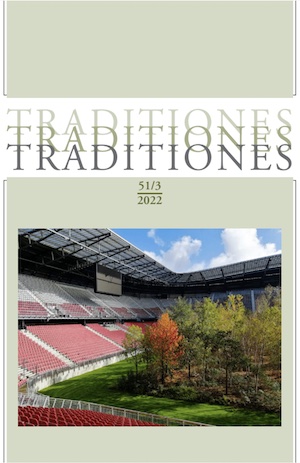
Urbane prihodnosti / Urban Futures
Vol. 51 No. 3 (2022)Volume Editors: Saša Poljak Istenič and Jaro Veselinovič
In the thematic section on urban futures, the authors look at the issues that have emerged as central to the future of selected Slovenian cities and the efforts of their inhabitants, who agree with them and are actively working towards their realisation, who oppose them or ignore them – or who are being ignored by the cities. An article by Valentina Gulin Zrnić and Saša Poljak Istenič introduces the future as an object of cultural anthropological research and an analytical concept on which the following discussions are based. Tatiana Bajuk Senčar and Saša Poljak Istenič discuss the bees in Ljubljana, which have become a symbol of a clean environment and therefore an argument for changing approaches to city management. Jaro Veselinovič and Miha Kozorog analyse the prevailing scenarios on how Nova Gorica and neighbouring Gorica/Gorizia can build a better future as European Capital(s) of Culture. Nina Vodopivec uses the example of Murska Sobota to raise awareness of how industrial workers as a community are denied an agency in creating the future. Katja Hrobat Virloget looks at how unreconciled past influences imagining the future in Istrian cities. The thematic section is complemented by articles on responsibility in public space by Nevena Škrbić Alempijević and Tomislav Oroz and on the challenges of integrating highly skilled migrants into the professional sport by Marijeta Rajković Iveta.
Klaus Littmann's artistic intervention For Forest at the Wörthersee Stadium in Klagenfurt/Celovec raised awareness about climate change and the future of nature. Photo: Saša Poljak Istenič, 16 October 2019
-

Večjezičnost v folklori / Multilingualism in Folklore
Vol. 51 No. 2 (2022)Volume Editors: Marija Klobčar and Urša Šivic
This issue of Traditiones focuses on revealing and interpreting cross-linguistic song connections in their contextual settings. The authors, Hana Urbancová, Ameneh Youssefzadeh, Marjeta Pisk, Mojca Ravnik, Marija Klobčar, Mojca Kovačič, and Urša Šivic, examine song and music practices in various multilingual communities, some with a focus on border areas. Through historical analysis and contemporary reflections, they reveal characteristics that highlight not only the diversity of the examined social contexts but also the different expressing possibilities of bilingual songs. These questions transcend local and temporal contexts, opening new horizons for folklore studies.
Cover image: Singing and music at the parish fair in Göriach/Gorje in the Gail Valley in Austrian Carinthia, September 15, 2019 (GNI ZRC SAZU Archive, Ljubljana).
-
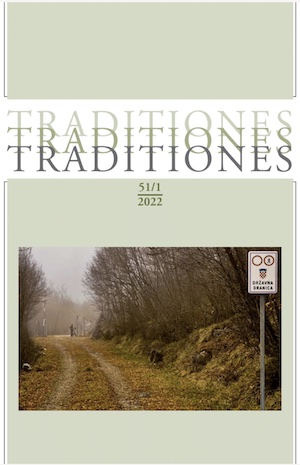
Razprave / Articles
Vol. 51 No. 1 (2022)Volume Editors: Jurij Fikfak and Ingrid Slavec Gradišnik
In the first volume of Traditiones 2022, there are five articles. In the first article, Slavec Gradišnik reviews the last decade of the Institute for Slovenian Ethnography, its orientations, and main emphases. A Naterer, L Vrhovnik, and P Škerget analyze in detail the question of thematic fields in Slovenian anthropology of the 21st century. R Mrvič thematizes different perceptions and conceptions of heritage, paying particular attention to the linguistic heritage. B Jezernik, in the discussion, shows the often-overlooked role that priests played in the formation of ethnic and national identity in the local environment. Finally, M Rakonjac, L Pajović Dujović, and S Šubarić discuss traditional and modern wedding rituals in Montenegro.
-
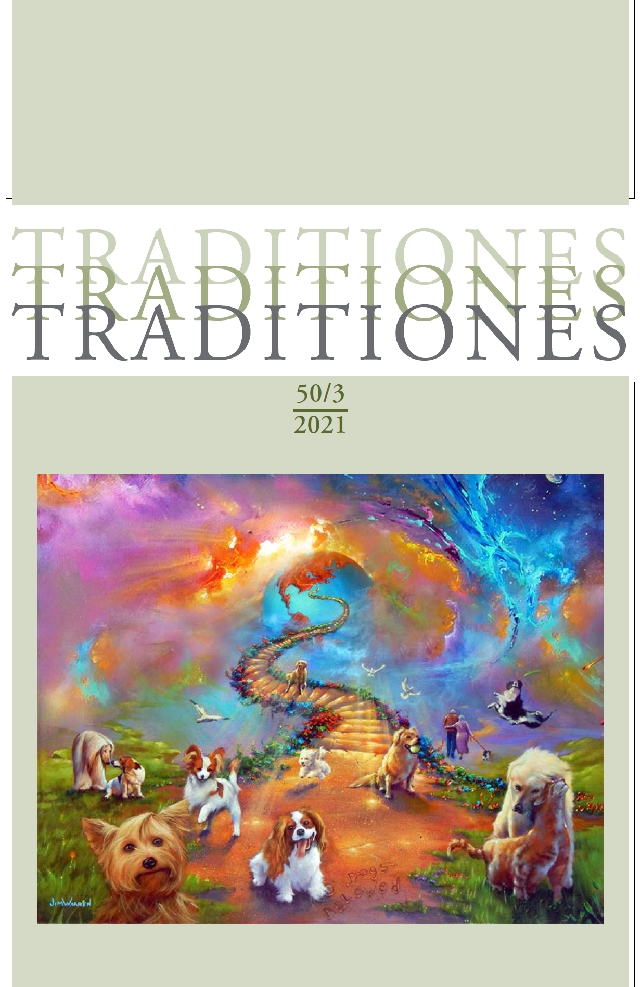
Vernakularna religija in sodobne duhovnosti / Vernacular Religion and Contemporary Spiritualities
Vol. 50 No. 3 (2021)Volume Editors: Daniel Wojcik, István Povedák, and Jurij Fikfak
It is now more than a quarter century since Leonard Primiano’s seminal article “Vernacular Religion and the Search for Method in Religious Folklife” launched the concept of Vernacular Religion to denote the study of “religion as it is lived: as human beings encounter, understand, interpret, and practice it.” This issue of Traditiones brings insights into how people deal with enormous issues such as our place in the universe, our relationship with-other-than human beings, death, apocalypse and afterlives using an ‘toolkit’ of institutional and vernacular knowledge.
Cover image: "All dogs go to heaven." (©Jim Warren - jimwarren.com)
-
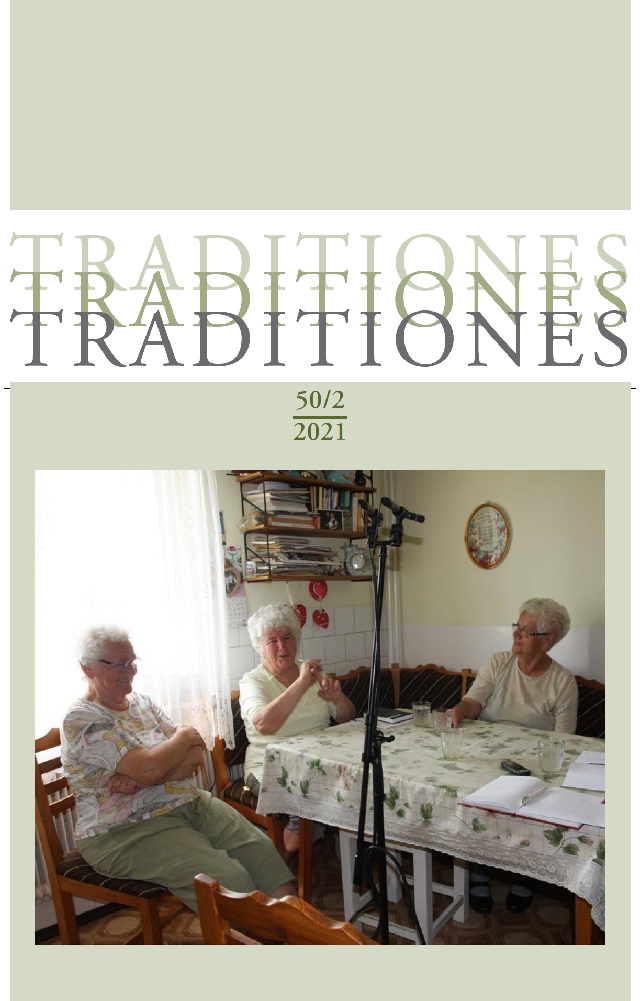
Misliti, govoriti in peti folkloro / Thinking, Speaking, and Singing Folklore
Vol. 50 No. 2 (2021)Volume Editor: Marjetka Golež Kaučič
This issue of Traditiones is dedicated to a contemplation of language in folklore; the ways we think folklore or perceive it from the aspect of linguistic properties, which differ between one language code and another. The authors (Gregor Strle, Valentina Bold, Marjetka Golež Kaučič, Tjaša Jakop, Thomas McKean, Anja Moric, Delia Dattilo in Cinzia Citraro) deal with the intertwining of languages and the way they are affected by various factors – external and internal. Contributions emerge from the fundamental questions whether folklore and dialect are intrinsically connected, and what is the meaning of the language of folklore, or even multi-lingual systems in folklore texts and contexts.
Cover image: Three singers. Slovenska ves/Rábatótfalu, Slovensko Porabje, 28. 5. 2018 (Arhiv GNI ZRC SAZU, Ljubljana).
-

Dediščine: perspektive in prakse / Heritages: Perspectives and Practices
Vol. 50 No. 1 (2021)Volume Editors: Jurij Fikfak and Ingrid Slavec Gradišnik
First issue of Traditiones provided room for reflections on where we stand with heritage today. Three aspects or approaches to thematizing heritage were decisive: an overview of research to date (Alessandro Testa), a view forward (Laurent Sebastien Fournier, Regina Bendix), and concrete heritage practices in various European contexts, especially in central Europe (Roland W Peball and Klaus Schönberger, Špela Ledinek Lozej and Marjeta Pisk, Božidar Jezernik, Petko Hristov, Katarina Koštialová and Ivan Murin, Barbara Ivančič Kutin and Monika Kropej Telban).
Cover image: “How Can One Cope with Such a Legacy?” Memorial Center Lipa (Cro). April 30, 2017 (Photo by Jurij Fikfak)
-

Razprave / Articles
Vol. 49 No. 3 (2020)Volume Editors: Špela Ledinek Lozej, Katarina Šrimpf Vendramin, Ingrid Slavec Gradišnik, and Jurij Fikfak
-
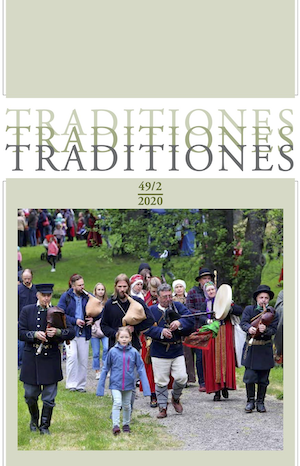
Etnomuzikološke in etnokoreološke razprave / Ethnomusicological and Ethnochoreological Discussions
Vol. 49 No. 2 (2020)Volume Editors: Mojca Kovačič and Rebeka Kunej
-
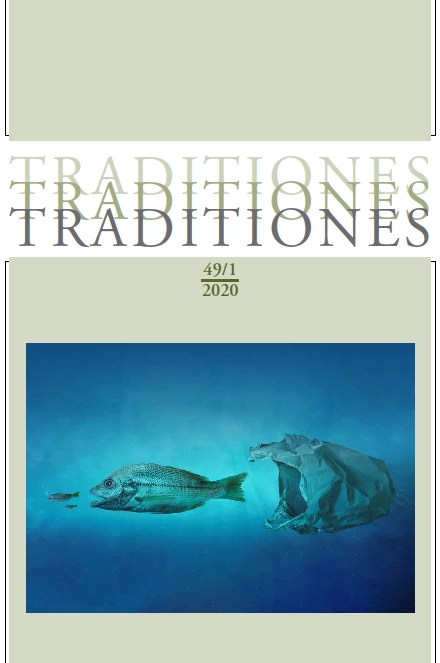
Preobrazba trajnostnega razvoja / Transforming Sustainability
Vol. 49 No. 1 (2020)Volume Editors: Dan Podjed and Lana Peternel
-

OBREDNE PESMI MED LITURGIJO IN LJUDSKIM IZROČILOM / RITUAL SONGS BETWEEN LITURGY AND FOLK TRADITION
Vol. 48 No. 2 (2019)Uredila / Edited by Drago Kunej & Urša Šivic
-

ZAVAROVANA OBMOČJA OB SLOVENSKO-MADŽARSKI MEJI / PROTECTED AREAS ALONG THE SLOVENIAN-HUNGARIAN BORDER
Vol. 48 No. 1 (2019)Uredili / Edited by Tatiana Bajuk Senčar, Miha Kozorog & Lászlo Mód
Traditiones 48 1 so nastale v okviru projekta J6-8254 in raziskovalnega programa P6-0088;
madžarski raziskovalci so bili financirani v okviru projekta SNN 126230. -
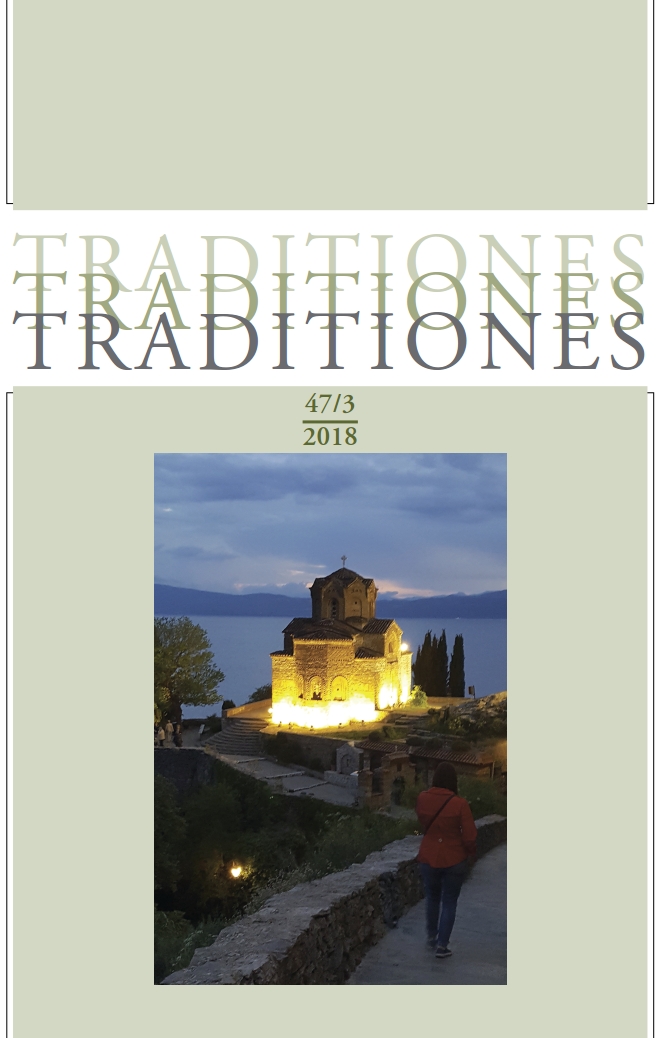
SACRED SPACE AND PLACE AND THEIR SYMBOLIC ADOPTION / SVETI PROSTOR IN KRAJ IN NJUNO SIMBOLNO PRISVAJANJE
Vol. 47 No. 3 (2018)Edited by / Uredili Jelka Vince Pallua & Ingrid Slavec Gradišnik
Selected papers of the panel “Sacred Space and Place and their Symbolic Adoption” organized by the WG Group Space-Lore and Place Lore at the SIEF Congress Ways of Dwelling: Crisis - Craft – Creativity (Göttingen, Germany, 2017) focus on symbolic representations of space, mental mapping, adoptions and inscribing of meaning of the individual, as well as of the community into sacred spaces and places in Israel, Guatemala, Finland, and Austria.
Izbrani članki panela »Sveti prostor in kraj in njuna simbolna prisvojitev«, ki ga je organizirala delovna skupina Space-Lore and Place-Lore na kongresu SIEF Načini bivanja: Kriza – moč – ustvarjalnost (Göttingen, Nemčija, 2017) obravnavajo simbolne predstavitve prostora, mentalno zemljevidenje, prisvojitve ter individiualne in skupnostne vpise v svete prostore in kraje v Izraelu, Gvatemali, na Finskem in v Avstriji.
-
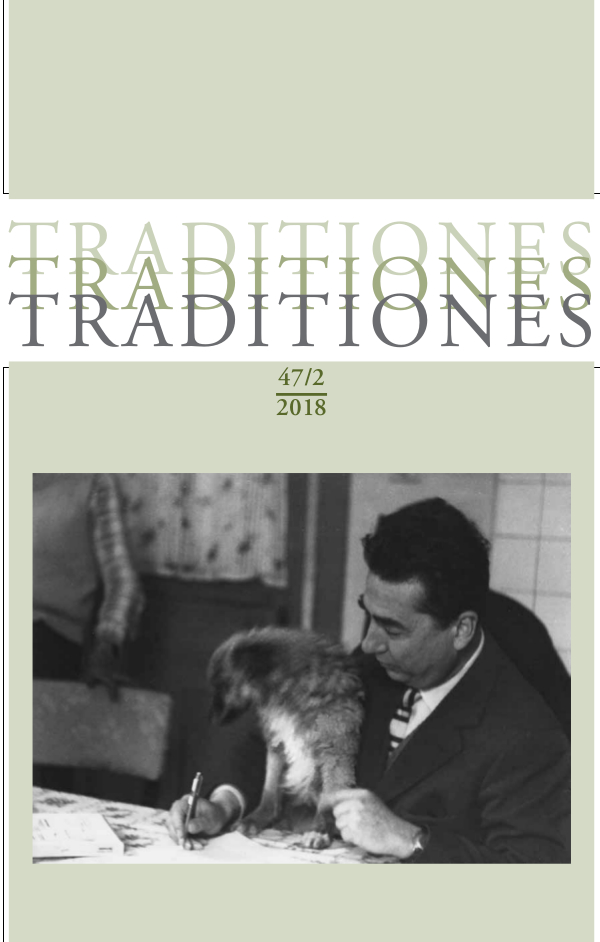
INTERDISCIPLINARNI SPLET HUMANISTIČNIH RAZISKAV / AN INTERDISCIPLINARY MISCELLANEA OF HUMANIST RESEARCH
Vol. 47 No. 2 (2018)Uredila / Edited by Marjetka Golež Kaučič
Vprašanja mitologije in mitofobije, individualnega glasbenega izvajanja in samoizraznosti ruskega glasbenika in harmonikarja, čustveno in barvno zaznavanje ljudske glasbe in drugih glasbenih zvrsti, nova izražanja strahu in travmatičnih doživetij, produkcija balad na letakih v Londonu v 18. stoletju, pes v filmu, nacionalni simboli in koncept avtohtone vrste se razvrščajo v preplet humanističnih raziskav kot tudi kognitivnih in tehnoloških.
Issues of mythology and mythophobia, the individual musical performance and musical self-expression of a Russian musician and accordion player, emotional and color perception of folk music and other genres, new expressions of fear and traumatic experiences, the production of broadside ballads in London in the eighteenth century, the dog in film, national symbols, and the concept of native species all enter into an interlacing of humanistic, cognitive, and technical research.
-
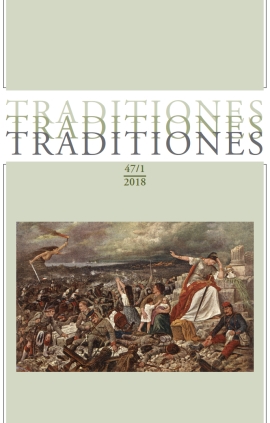
CULTURAL HERITAGE OF THE GREAT WAR / KULTURNA DEDIŠČINA PRVE SVETOVNE VOJNE
Vol. 47 No. 1 (2018)Edited by / Uredila Božidar Jezernik & Jurij Fikfak
The First World War, also known as the Great War, which lasted from 1914 to 1918, left a significant mark on the twentieth century. It radically changed the demographic composition of Europe (over sixteen million people were killed), resulted in the dissolution of four empires (Austria-Hungary, Russia, Germany, and the Ottoman Empire), had a crucial impact on European values, inspired the search for the new man during the interwar period, and ultimately significantly influenced the shaping, perception, and reception of cultural heritage.
Prva svetovna vojna ali Velika vojna od 1914 do 1918 je bistveno zaznamovala dvajseto stoletje. Usodno je vplivala na demografsko podobo Evrope, saj je umrlo nad 16 milijonov ljudi, na konec štirih imperijev (Avstro-Ogrske, Rusije, Nemčije in Osmanskega cesarstva), usodno je vplivala na njene vrednote in na iskanje po novem človeku med obema vojnama, nenazadnje na oblikovanje, percepcijo in recepcijo kulturne dediščine.
-

ALPE - ADRIA / ALPE - JADRAN
Vol. 46 No. 1-2 suppl. (2017)Edited by / Uredila Jurij Fikfak & Klaus Schönberger -

AD HONOREM MARIJA STANONIK ET MOJCA RAVNIK
Vol. 46 No. 1-2 (2017)Uredili / Edited by Monika Kropej Telban & Saša Poljak Istenič -

CELEBRITIES IN CENTRAL & SOUTHEASTERN EUROPE / SLAVNE OSEBNOSTI V SREDNJI IN JV EVROPI
Vol. 45 No. 1 (2016)Edited by / Uredil Dan Podjed -

AD HONOREM MIRKO RAMOVŠ
Vol. 44 No. 2 (2015)Uredili / Edited by Rebeka Kunej & Ingrid Slavec Gradišnik -

TRIGLAVSKI NARODNI PARK – STRATEGIJE / TRIGLAV NATIONAL PARK – STRATEGIES
Vol. 44 No. 1 (2015)Uredili / Edited by Jurij Fikfak, Tatiana Bajuk Senčar & Dan Podjed -

GLASBENONARODOPISNI INŠTITUT ZRC SAZU (1934–2014) / INSTITUTE OF ETHNOMUSICOLOGY SRC SASA (1934–2014)
Vol. 43 No. 2 (2014)Uredil / Edited by Drago Kunej -

TRIGLAVSKI NARODNI PARK / TRIGLAV NATIONAL PARK
Vol. 42 No. 2 (2013)Uredili / Edited by Jurij Fikfak, Tatiana Bajuk Senčar & Dan Podjed -

CULTURAL HERITAGE / KULTURNA DEDIŠČINA
Vol. 41 No. 2 (2012)Edited by / Uredila Ingrid Slavec Gradišnik -

RITUAL YEAR 7 / RITUALNO LETO 7
Vol. 41 No. 1 (2012)Edited by / Uredila Jurij Fikfak & Laurent Sébastien Fournier -

REAL AND VIRTUAL SPACES OF FOLKLORE STUDIES / REALNI IN VIRTUALNI PROSTORI FOLKLORISTIKE
Vol. 40 No. 3 (2011)Edited by / Uredili Marija Klobčar & Ingrid Slavec Gradišnik -

RESEARCHING FOLK CULTURE IN SLAVIC LANDS (1770–1880)/ RAZISKOVANJE LJUDSKE KULTURE V SLOVANSKIH DEŽELAH MED 1770 IN 1880
Vol. 40 No. 2 (2011)Edited by / Uredili Jurij Fikfak, Dan Podjed & Tatiana Bajuk Senčar -

60 LET INŠTITUTA ZA SLOVENSKO NARODOPISJE ZRC SAZU/THE 60TH ANNIVERSARY OF THE ZRC SAZU INSTITUTE OF SLOVENIAN ETHNOLOGY
Vol. 40 No. 1 (2011)Uredila / Edited by Ingrid Slavec Gradišnik -

SRBI V SLOVENIJI, SLOVENCI V SRBIJI / SERBS IN SLOVENIA, SLOVENIANS IN SERBIA
Vol. 39 No. 1 (2010)Uredili / Edited by Ingrid Slavec Gradišnik & Dragana Radojičić -

EUROPE. IMAGINATION AND PRACTICES / EVROPA. IMAGINACIJA IN PRAKSE
Vol. 38 No. 2 (2009)Edited by / Uredila Jurij Fikfak & Maria Vivod -

AD HONOREM MILKO MATIČETOV ET ZMAGA KUMER
Vol. 38 No. 1 (2009)Uredili / Edited by Ingrid Slavec Gradišnik & Marjetka Golež Kaučič -

ETNOLOŠKI POGLEDI IN PODOBE / ETHNOLOGICAL PERSPECTIVES AND IMAGES
Vol. 37 No. 2 (2008)Edited by Ingrid Slavec Gradišnik
Ta zvezek Traditones je namenjen predstavitvi spoznanj raziskovalk in raziskovalcev iz Inštituta za slovensko narodopisje ZRC SAZU, ki so nastala v okviru raziskovalnega projekta »Etnološki pogledi in podobe med 19. in 21. stoletjem.« Razumeti jih gre kot prispevke k sintezi, kot preiskavo možnosti, kako zasnovati kolikor toliko reprezentativno delo o podobi kulture in kulturnih procesov na Slovenskem; to ostaja namreč temeljna usmeritev raziskav inštitutovih sodelavk in sodelavcev tudi v prihodnje.

